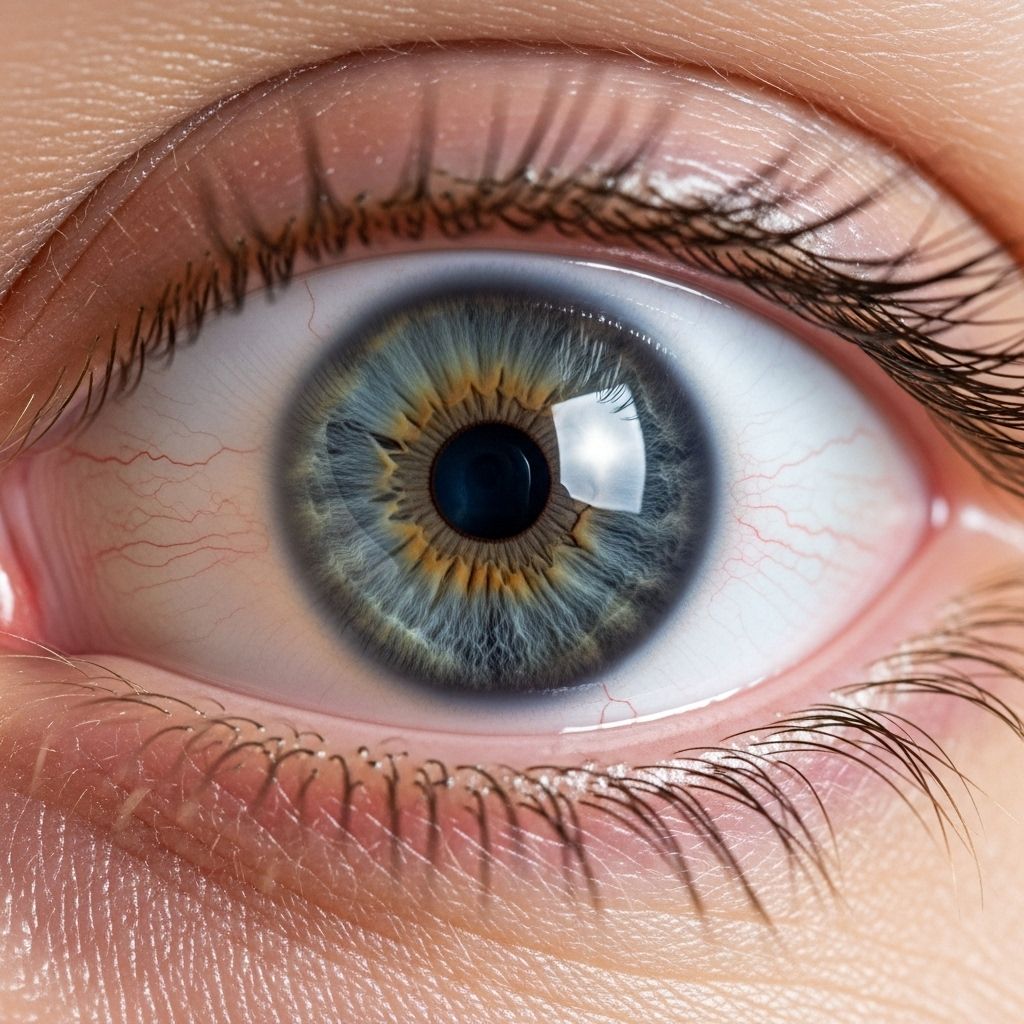Understanding Anicteric Sclerae: Eye Health and Its Clinical Significance
Explore what anicteric sclerae means, why scleral color matters, and how eye exams reveal clues about your underlying health.

Anicteric Sclerae Explained
Anicteric sclerae refers to the clinical observation that the whites of your eyes (the sclerae) appear normal and not yellowed. The term is derived from ‘anicteric’ (without jaundice), signifying the absence of yellow discoloration that is often associated with medical conditions such as liver disease or blood disorders. Monitoring scleral appearance during eye examinations gives doctors vital clues about your overall health.
Why Scleral Appearance Matters
Doctors pay close attention to the color and condition of the sclerae because changes can be early indicators of serious health issues. The white or bluish-white coloration that characterizes healthy sclerae can quickly signal whether further investigation is needed for conditions affecting the liver, blood, or other body systems.
- White sclerae: Generally indicates good eye and systemic health.
- Yellow sclerae: May indicate jaundice, commonly related to liver dysfunction, bile duct obstruction, or certain blood disorders.
- Bluish sclerae: Occasionally observed in some anemia and rare connective tissue diseases.
What Does ‘Anicteric Sclerae’ Mean Clinically?
The term is most commonly used in medical examinations and reports to confirm the absence of visible jaundice. In a typical eye exam, the physician will check:
- Color of the sclera (should be white)
- Uniformity of color (no patches or streaks of yellow)
- Presence of visible blood vessels (normal: thin, fine red lines)
Anicteric sclerae are often noted as part of a ‘normal’ physical exam finding or as reassurance that certain systemic illnesses are unlikely at the moment.
Jaundice and Scleral Icterus: What Happens When Sclerae Are Yellow?
Jaundice is a condition marked by the yellowing of the skin and eyes, resulting from elevated bilirubin levels. The yellowing seen in the sclerae is called scleral icterus. Bilirubin is a yellow pigment produced during the breakdown of red blood cells and processed by the liver. When liver function is compromised, bilirubin builds up, leading to this characteristic color change.
Common Causes of Scleral Icterus
- Liver disease (e.g., hepatitis, cirrhosis)
- Bile duct obstruction (from gallstones or tumors)
- Excessive breakdown of red blood cells (hemolysis)
Understanding Bilirubin
| Bilirubin Production | Normal Processing | When Disrupted |
|---|---|---|
| Breakdown of old red blood cells | Liver filters and releases bilirubin into bile | Bilirubin accumulates, causing yellow color in sclerae/skin |
How Doctors Assess Scleral Findings in Exams
During a standard physical or eye exam, clinicians will:
- Inspect eye under good lighting for color, uniformity, and vascularity
- Ask about symptoms like fatigue, abdominal pain, or changes in urine/stool color
- Order further tests if sclerae show yellowing, such as liver function panels or imaging
Medical reports will often use objective phrases like ‘anicteric sclerae’ to state that no jaundice is present, versus ‘scleral icterus’ for confirmed yellowing.
Normal vs. Abnormal Scleral Appearance: What to Watch For
| Normal Sclerae | Abnormal Sclerae |
|---|---|
| White or bluish-white color Uniform appearance Fine red blood vessels No yellow patches | Yellow discoloration (icteric) Uneven coloration Prominent blood vessels Patches, streaks, or spots |
- If the sclerae appear yellow, prompt assessment of liver function is critical.
- Sudden color changes may signal an acute medical issue and require evaluation.
When Should You Seek Medical Attention?
If you notice yellowing of the eyes, skin, dark urine, or unexplained fatigue, these may be signs of underlying liver or blood disorders. Speak to a healthcare provider if you observe:
- New yellow discoloration in eyes or skin
- Abdominal pain or swelling
- Fever or unexplained weight loss
- Changes in stool color (pale or clay-colored)
Common Misunderstandings About Anicteric Sclerae
- Anicteric sclerae do not mean absence of all disease: It simply means no visible jaundice is present.
- White sclerae can still be present in early or atypical liver disease: Other tests may be required for diagnosis.
- Bluish tint doesn’t always indicate disease: Can sometimes be normal, especially in children.
Other Causes of Scleral Discoloration
- Medications (e.g., minocycline can cause bluish tint)
- Genetic Disorders (e.g., osteogenesis imperfecta)
- Environmental factors (eye injury, foreign bodies)
If scleral color is unusual but not yellow, tell your doctor so they can evaluate if further workup is needed.
Frequently Asked Questions About Anicteric Sclerae
Q: What does anicteric sclerae indicate in my medical report?
A: It means that your eyes show no visible sign of jaundice or yellowing, which is generally a sign of good liver and blood health.
Q: Can sclerae be white even if I have a liver problem?
A: Yes, some liver diseases do not initially cause visible yellowing; other diagnostic tests may still be required if liver dysfunction is suspected.
Q: What if my sclerae look yellow?
A: Yellow sclerae (scleral icterus) may indicate increased bilirubin levels, often linked to liver or bile duct disorders, and should be promptly examined by a healthcare provider.
Q: Are there non-liver causes of scleral discoloration?
A: Yes. Medications, genetic disorders, eye trauma, and some environmental exposures can affect scleral color.
Conclusion: Key Takeaways About Anicteric Sclerae
- ‘Anicteric sclerae’ means no visible jaundice is present in the whites of the eyes.
- Observing scleral color is a routine part of physical exams and can reveal clues about your overall health.
- Any unusual yellowing or color change should be promptly evaluated to rule out serious illness.
Regular medical checkups and good communication with your healthcare provider can help address concerns related to eye color changes and support overall wellness.
References
- https://atopic-dictionary.com/anicteric
- https://balumed.com/en/medical-dictionary/sclerae-anicteric
- https://balumed.com/en/medical-dictionary/anicteric-sclerae
- https://www.getlabtest.com/news/post/anicteric-sclerae-eye-health
- https://www.osmosis.org/answers/scleral-icterus
- https://my.clevelandclinic.org/health/symptoms/scleral-icterus
- https://homework.study.com/explanation/is-anicteric-sclera-normal.html
- https://www.healthline.com/health/how-to-get-rid-of-yellow-eyes
Read full bio of medha deb












